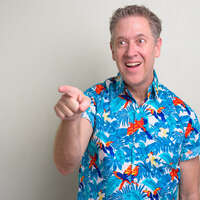Surgeon Q&A: Stopping The Heart During Cardiac Surgery
Written By: Allison DeMajistre, BSN, RN, CCRN
Medical Expert: Joanna Chikwe, MD, Chair of Cardiac Surgery at Cedars-Sinai Medical Center
Reviewed By: Adam Pick, Patient Advocate, Author & Website Founder
Published: February 7, 2024
As a follow-up to our recent post about restarting the heart after cardiac surgery, I just received an email from Ted who asked me, “How do cardiac surgeons stop the heart so they can repair or replace a defective valve?”
To answer Ted’s question, I met with Dr. Joanna Chikwe, Chair of Cardiac Surgery at Cedars-Sinai Medical Center in Los Angeles, California. During her extraordinary career, Dr. Chikwe has performed thousands of cardiac procedures.
Key Learnings About Stopping The Heart
- Dr. Chikwe told us there are two steps surgeons must take when stopping the heart. “The first thing we do is connect the patient to a heart-lung machine that takes over the function of both the heart and lungs,” she said. The next step is to stop the heart. “We inject a very cold potassium solution into the heart, which stops it.” When the heart stops, the normal blood supply is then diverted into the heart-lung machine for the duration of the surgery. “The miracle is that as soon as we replace its normal blood supply, the heart starts beating again,” Dr. Chikwe said.
 Dr. Joanna Chikwe
Dr. Joanna Chikwe
- I had to ask a follow-up to Ted’s question because I know our patients at home would also want to know, “Is it safe to stop the heart for the period of time that it takes to repair or replace the valves?” Dr. Chikwe said, “When patients ask me that same question, I always use the analogy of flying from Los Angeles to New York or London, which happens thousands of times a year. You wouldn’t think 300 people could get in a metal tin can, go down a runway at 600 miles an hour, take off and then land. Yet, we do it all the time. Heart surgery is so refined and sophisticated now that it’s amazingly safe.”
Thanks Dr. Chikwe and Cedars-Sinai Medical Center!
On behalf of Ted and our patient community, many thanks to Dr. Joanna Chikwe for explaining how cardiac surgeons stop the heart to repair or replace a valve and reassuring us that it’s a safe and reliable procedure. We also want to thank Cedars-Sinai for continuing to take great care of our heart valve patients.
Related Links:
- Heart Month: “Go Red for Women” with Dr. Joanna Chikwe
- Robotic Mitral Valve Repair Surgery Explained by Dr. Joanna Chikwe
- Top 5 Complications After Heart Valve Surgery with Dr. Joanna Chikwe
Keep on tickin!
Adam
Video Transcript:
Adam: Hi everybody, it’s Adam with heartvalvesurgery.com. Today we’re in Los Angeles, and I’m thrilled to be joined by Dr. Joanna Chikwe, who is the founding chair of Cardiac Surgery at Cedars-Sinai Medical Center. Dr. Chikwe, it is great to see you again.
Dr. Chikwe: Great to see you, Adam.
Adam: Yeah, so we’re here. We’re in your office. Why not take this time to do something we love to do, which is answer patient questions. We got a great one that came in from Ted, literally about an hour ago. The question was, how do cardiac surgeons stop the heart so they can repair or replace a defective heart valve?
Dr. Chikwe: Amazing question. We need to do essentially two things. The first thing we do is we connect the patient to a heart lung machine that takes over the function of the beating hearts and the lungs. Then the second thing is stopping the heart, which we can do safely at that point by injecting a solution with potassium in it that is very cold into the heart instead of its normal blood supply, and that stops it. The miracle is that as soon as you replace its normal blood supply, it starts again.
Adam: Wow! I’ve got to ask you a follow-up, which is, I’m sure patients are watching this and they’re wondering, is this safe to do for the period of time in which you are repairing or replacing the valves?
Dr. Chikwe: When patients ask me that in the office, I always use the analogy of flying from Los Angeles to New York or to London, which happens thousands of times a year. You wouldn’t think that 300 people could get in a metal tin can, go down a runway at 600 miles an hour, take off and land, and yet we do it. Heart surgery is so refined and so sophisticated these days that it’s amazingly safe.
Adam: Wow! Dr. Chikwe, I can’t thank you enough for answering that question. Ted, I hope that helped you. I know that helped me. Dr. Chikwe, on behalf of everybody in our community, thanks for everything you and your team are doing here to stop the hearts safely, fix them, and then restart them. Great seeing you again.
Dr. Chikwe: Thank you, Adam.




